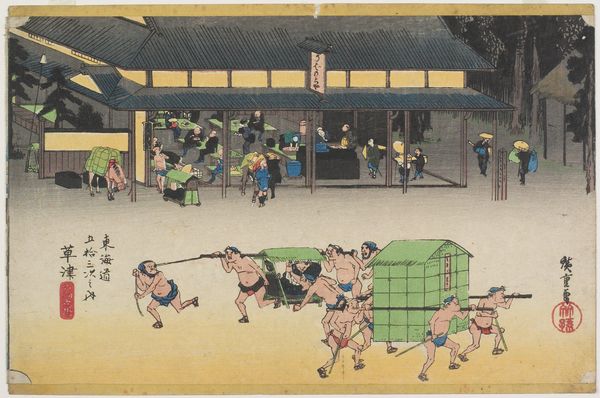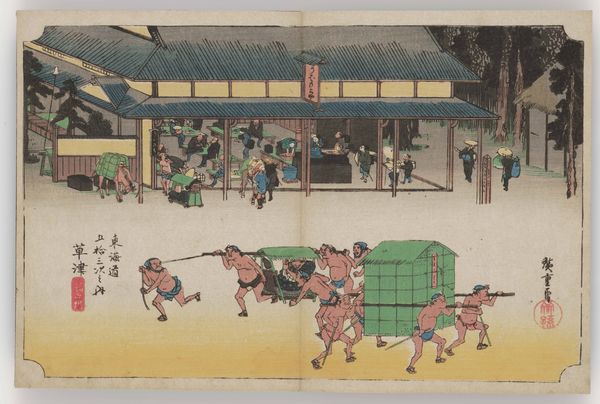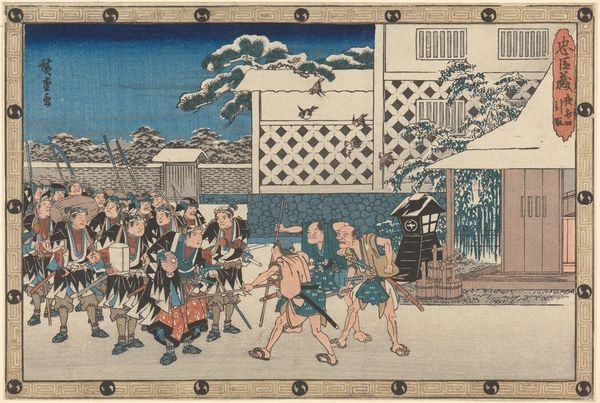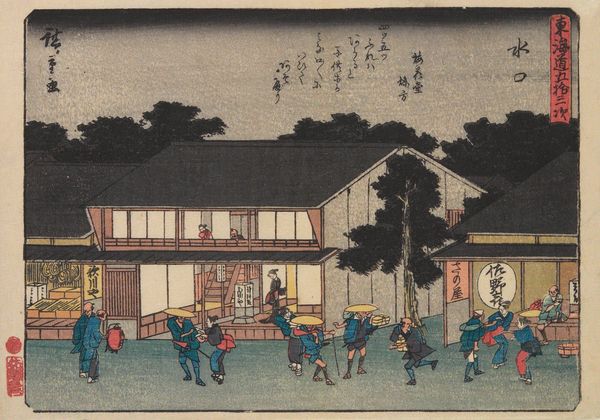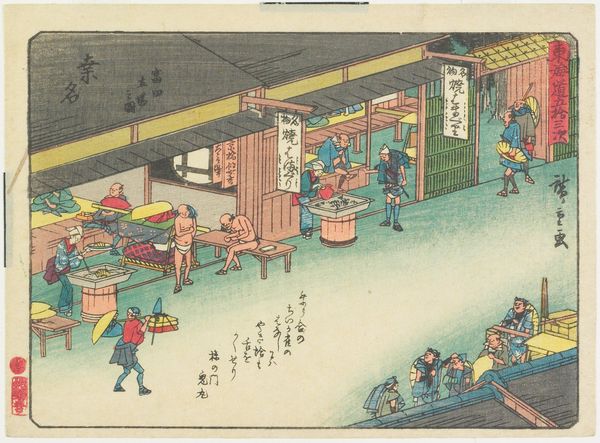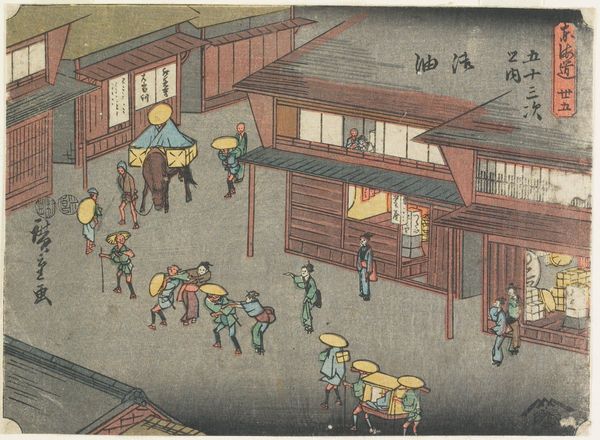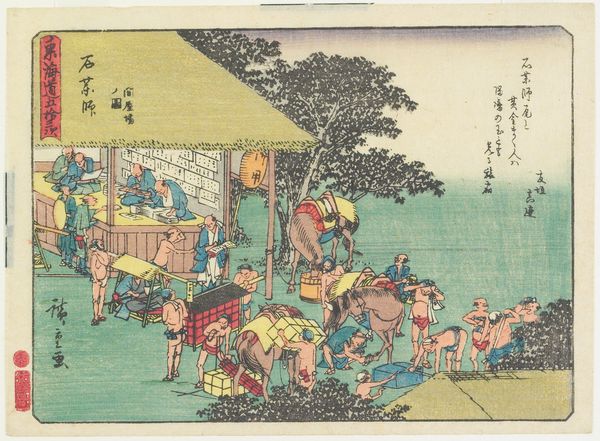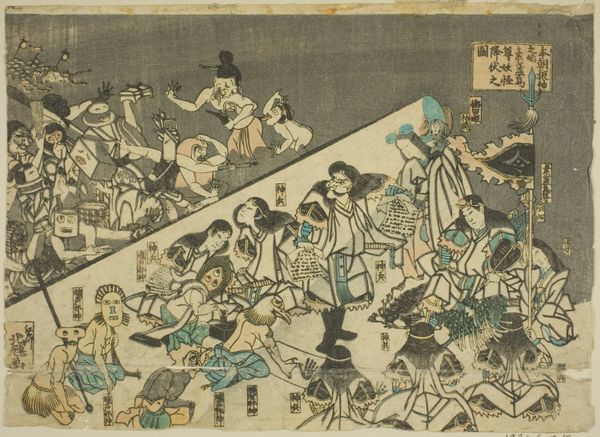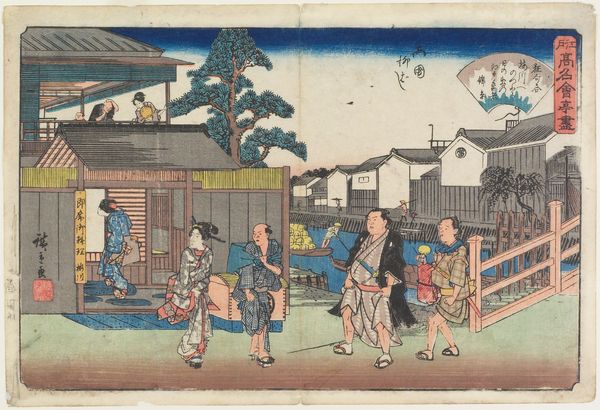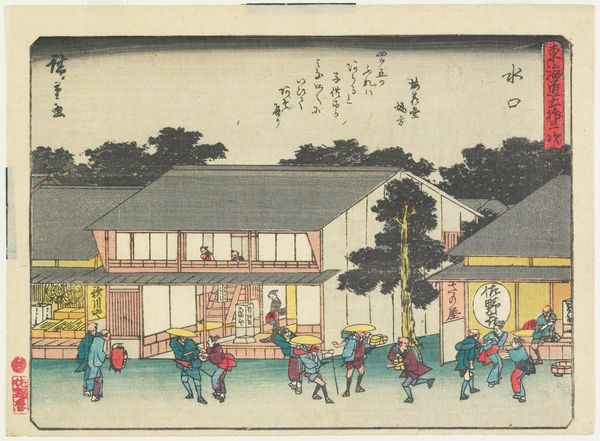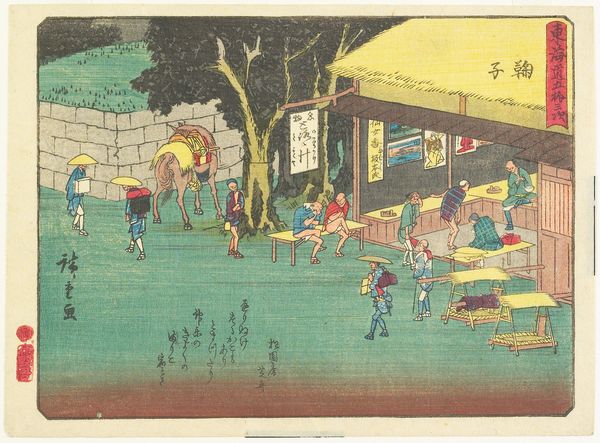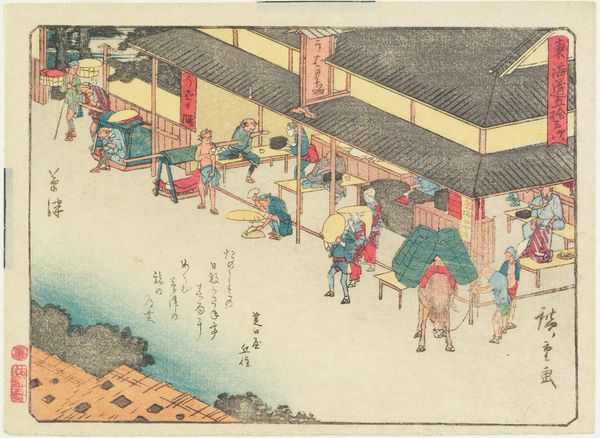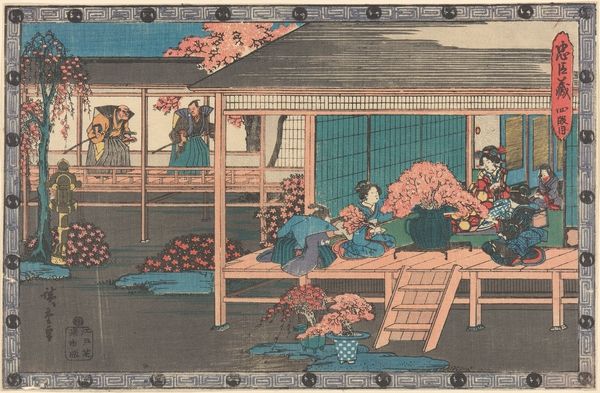
painting, print, watercolor, woodblock-print
#
water colours
#
narrative-art
#
painting
# print
#
asian-art
#
landscape
#
ukiyo-e
#
watercolor
#
woodblock-print
Copyright: Public Domain: Artvee
Curator: Today we are looking at “Landscape at Kusatsu,” a woodblock print crafted by Utagawa Hiroshige in 1831. Editor: It's busy! A flurry of bodies and architectural forms compete for space. I notice the figures hauling a covered palanquin – the effort seems almost performative, straining under the weight. Curator: Precisely. Kusatsu was a key post town along the Tokaido road. Hiroshige’s series, “Sixty-nine Stations of the Kisokaido,” immortalizes these transit hubs and their vital role in Edo-period society and economy. The subject itself is a demonstration of a kind of human powered shipping and logistics network. Editor: The layered composition intrigues me. You've got this inn bustling with activity above and the strained porters doing a kind of material work below. The contrast speaks volumes about the literal and figurative weight of supporting travel and commerce. The materiality here is quite interesting–wood, paper, ink all working together. Curator: It shows how popular art responded to, but also shaped, public perception. Ukiyo-e prints weren't simply mirrors of society, but active participants, standardizing what 'typical' scenes along these routes looked like to a broader audience. They boosted tourism. The woodblock itself and this printing process served as one of the great equalizers of artwork, bringing mass media to the populous. Editor: I appreciate how the artist captured the everyday labor often obscured. There’s nothing romanticized about those straining muscles, but there’s certainly an art to depicting it – the artist calls our attention to the costs of mobility. These figures and actions are themselves being shipped, not merely people. Curator: Absolutely. This work reminds us of the crucial infrastructure that fueled mobility and commerce during the Edo period, but with its aesthetic flattening, asks us to reconsider this system through a wider societal lens. The piece shows not just the physical location of transit but also this labor itself as a destination. Editor: Indeed. By focusing on the human exertion involved, the artwork allows us to question the real human costs of societal movement, challenging notions of effortless or glamorous travel. The materials here create that scene with surprising texture. Curator: Seeing through Hiroshige's artistic rendering offers an opportunity to contemplate the tangible, social and often unseen fabrics of the society. Editor: This print certainly provides us a snapshot of not just a place but the material conditions and laboring bodies of a society in transit.
Comments
No comments
Be the first to comment and join the conversation on the ultimate creative platform.
